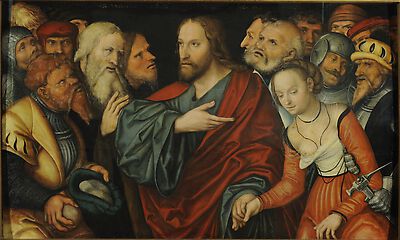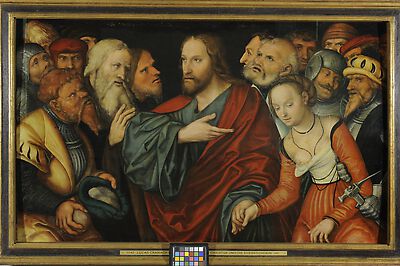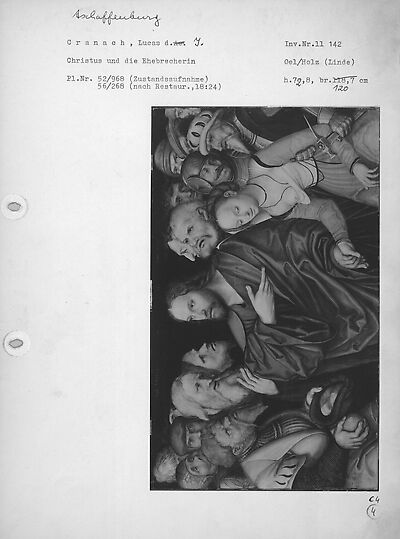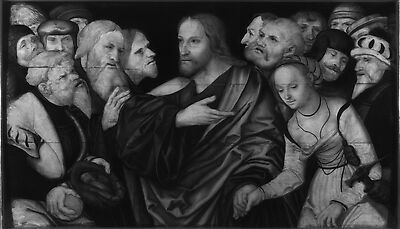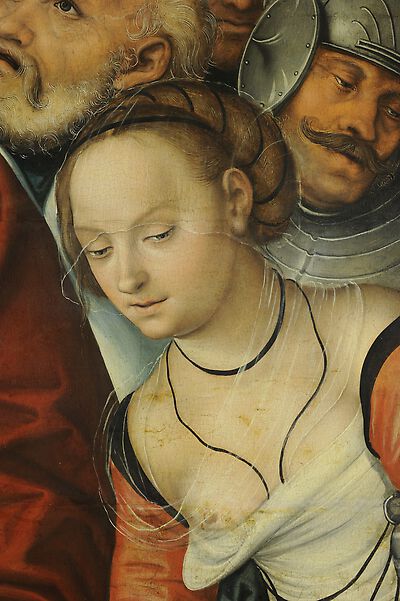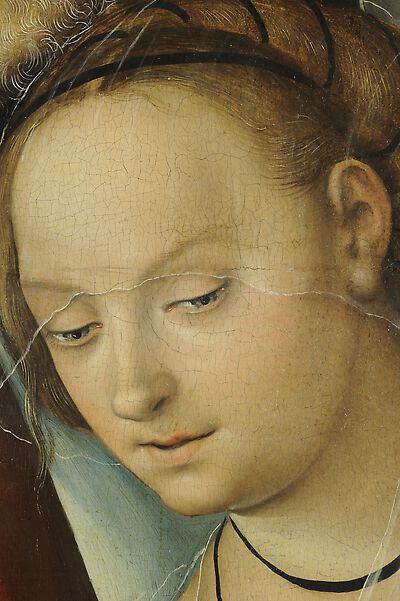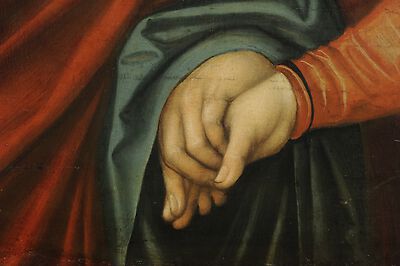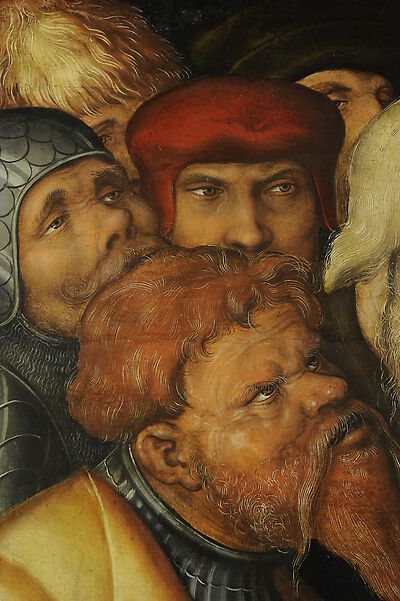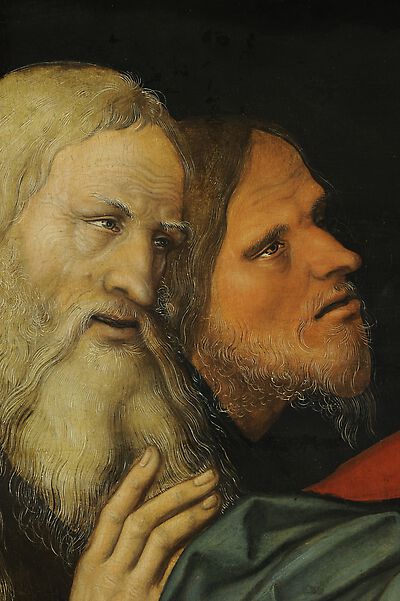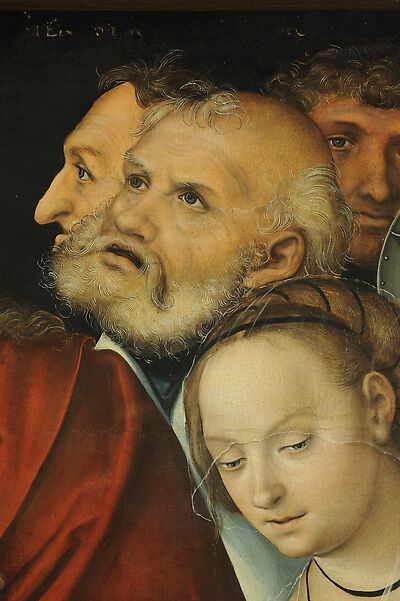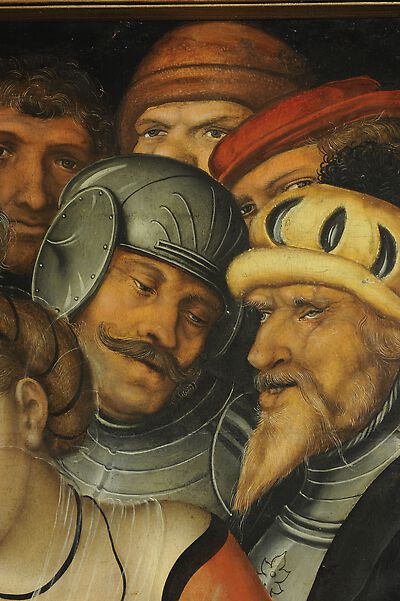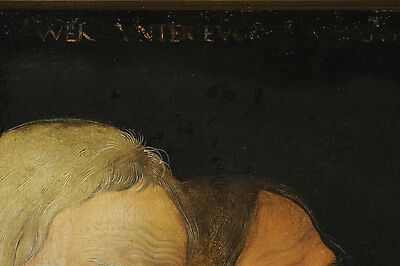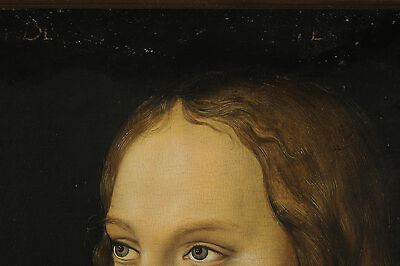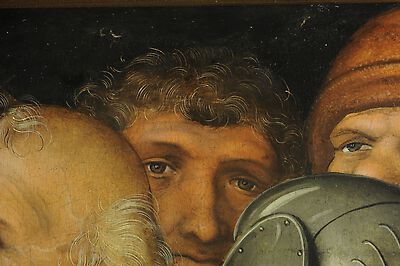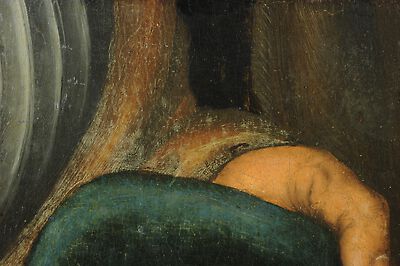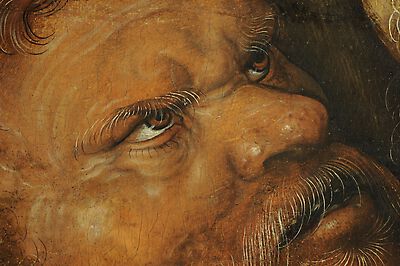'The depiction refers to Joh 8 1-11. Christ is preaching in the temple, when a woman accused of adultery is brought to him. According to Mosaic Law she should be stoned to death as punishment. [...]
The male mob drools and crowds around the dainty woman. They look down; as if
'The depiction refers to Joh 8 1-11. Christ is preaching in the temple, when a woman accused of adultery is brought to him. According to Mosaic Law she should be stoned to death as punishment. [...]
The male mob drools and crowds around the dainty woman. They look down; as if by chance her dress has slipped down to reveal her breasts - the male viewpoint is employed not only here to identify a moral transgression. The most ferocious man has already collected stones in his hat and holds one ready to throw. Christ speaks with the assailant, indicating at the adulteress, while gently holding her hand. A man in armor grabs her upper arm with his gloved hand and crowds in on her. He holds his axe in a manner, which is both threatening and meaning-less. Soldiers are not mentioned in the biblical text as the scene takes place in a temple. It is not the intention here to depict the biblical protagonists literally, but rather to convey the sense of threat posed by the situation. Employing all manners of physiognomic characterization the crowd is shown as negative, perhaps with the exception of the man with a white beard to the right of Christ (!) - the usual procedure since the Middle Ages. Christ stands as the dominant figure in the centre; alone the space the artist allows him to occupy confirms that he will vanquish in this conflict.
In contrast with the depiction of the same subject with full-length figures from the Stiftskirche Halle (collegial church, Halle) created two decades previously ([DE_BStGS_6246_FRSupp14]), this painting with half-length figures is a 'classical' pictorial type, which was invented in the Cranach Workshop and of which there are numerous examples and variants - also by the wider circle of followers.'
[Exhib. Cat. Aschaffenburg 2007, 279]
